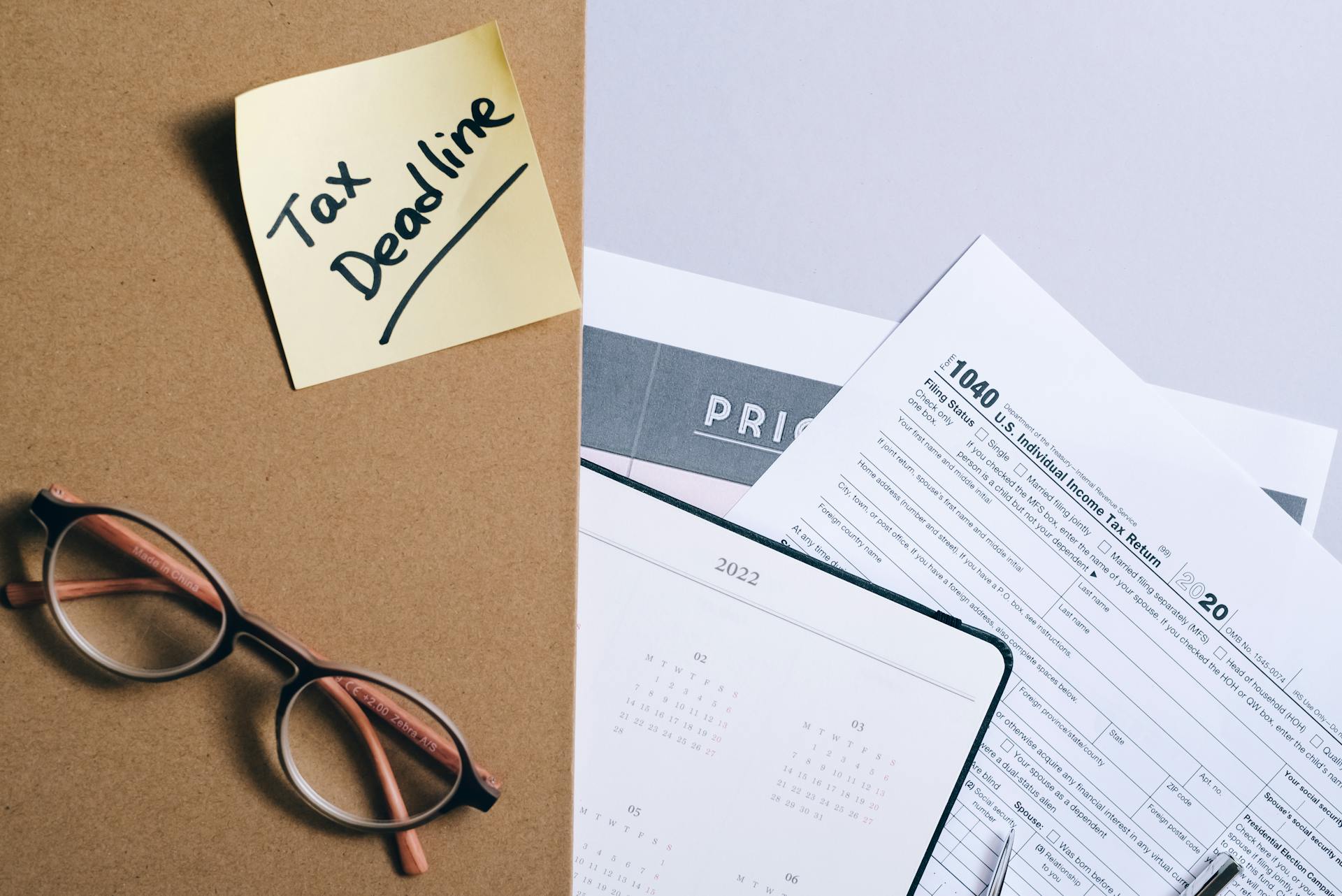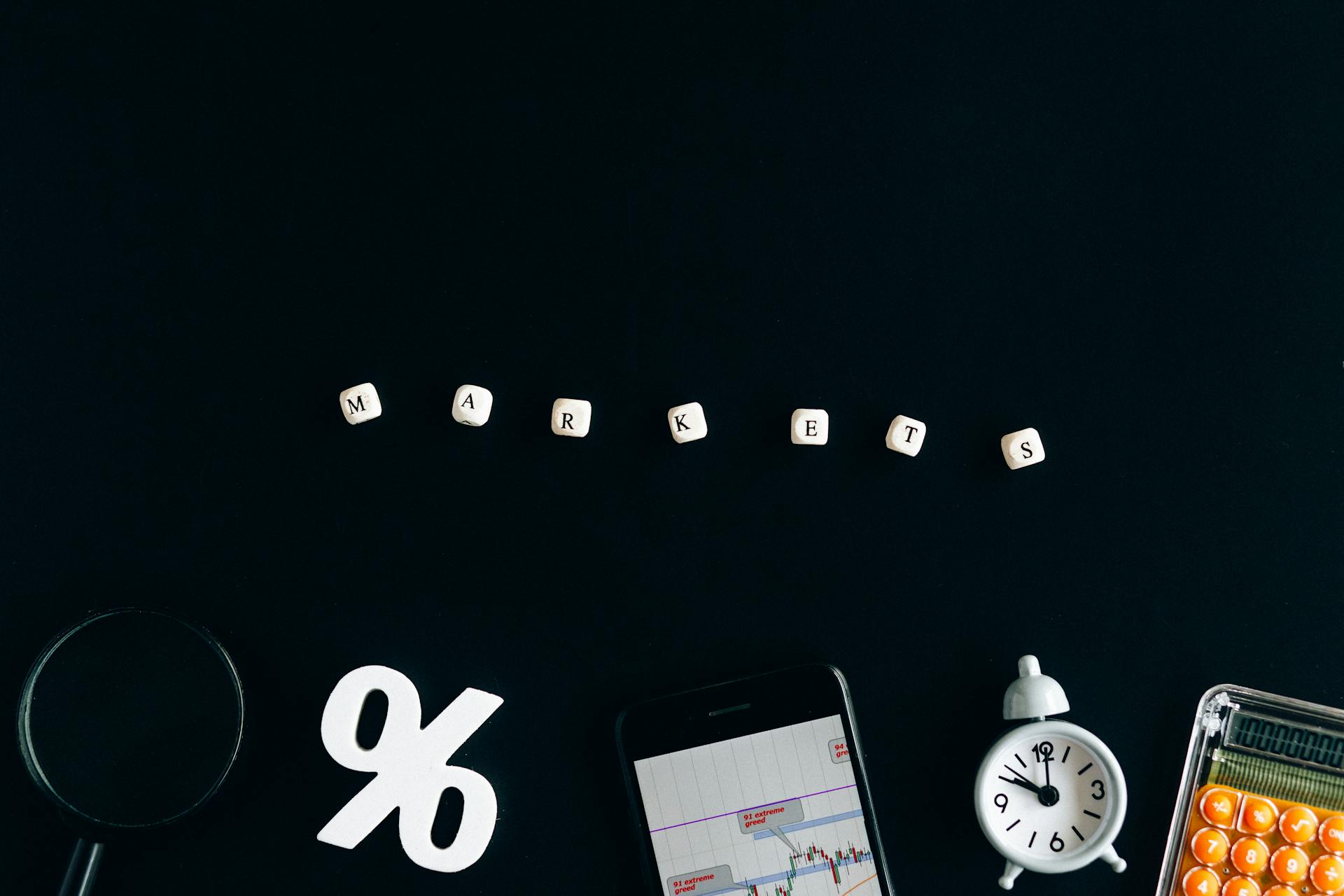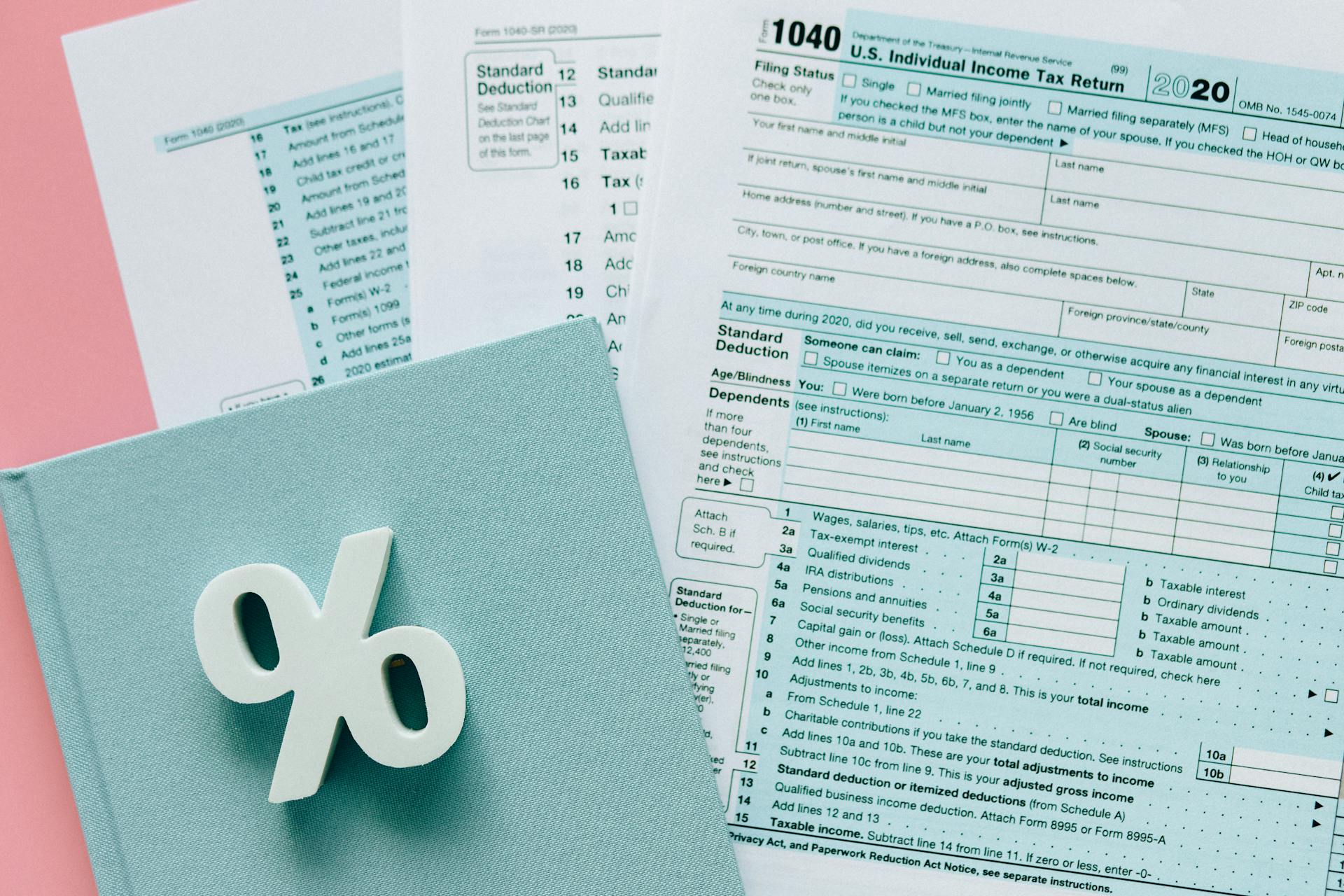
Corporate bonds are quoted in the market based on their yield to maturity, which is the total return an investor can expect to earn if they hold the bond to maturity. This yield is influenced by the bond's coupon rate, the market's expectations of future interest rates, and the bond's credit rating.
The yield to maturity is calculated by taking into account the bond's face value, coupon rate, and time to maturity. For example, a $1,000 bond with a 5% coupon rate will pay $50 per year in interest, which is a fixed income stream for the investor.
The market price of a corporate bond is quoted as a percentage of its face value, known as a percentage of par. This price is influenced by the bond's yield to maturity and the market's expectations of future interest rates.
The bond's credit rating plays a significant role in determining its yield to maturity and market price. A higher credit rating indicates a lower risk of default, which can lead to a lower yield to maturity.
How Are Corporate Bonds Quoted?
Corporate bonds are quoted as a percentage of their par value, which is typically $1,000. This means that a bond quoted at 98.00 is worth $980, or 98% of its par value.
A bond quoted above 100 is trading above its par value, known as a premium bond, while a bond quoted below 100 is trading below its par value, known as a discount bond. For example, a bond quoted at 105.00 is worth $1,050, or 105% of its par value.
On the bond's maturity date, the bondholder receives the bond's $1,000 par value, which means there is a ceiling on how high a corporate bond price can increase.
Corporate
Corporate bonds are typically priced at a nominal yield spread to a specific on-the-run U.S. Treasury bond that matches its maturity. This means that a 10-year corporate bond, for instance, is priced in relation to the 10-year Treasury bond.
The yield spread is the difference in yield between the corporate bond and the comparable Treasury bond. It's a key factor in determining the price of a corporate bond.
In practice, this means that investors can expect a certain return on investment from a corporate bond based on the yield spread to the comparable Treasury bond.
Types of Securities and Benchmark Spread
Corporate bonds are typically priced at a nominal yield spread to a specific on-the-run U.S. Treasury bond that matches its maturity. For example, 10-year corporate bonds are priced to the 10-year Treasury.
Bonds may be quoted based on the yield spread over a benchmark security like U.S. Treasurys, e.g., +175 basis points over Treasurys. This provides an easier comparison of non-Treasury securities with the risk-free government bond yield rates.
Treasury bonds are typically quoted in terms of yield only, while corporate and municipal bonds may be quoted by either price or yield. This difference in quoting methods can make it more challenging to compare these types of bonds.
A key concept in bond quoting is the benchmark spread, which is the yield spread over a benchmark security like U.S. Treasurys. This spread provides a basis for comparison between different types of bonds.
Here's a breakdown of the different types of bonds and how they are typically quoted:
This table highlights the different quoting methods used for various types of bonds. Understanding these methods is crucial for investors and traders to make informed decisions.
What Is a Quote?
A bond quote is the price at which a bond is trading, usually expressed as a percentage of par value. It's the price that someone is willing to pay for the bond in relation to 100, or par value.
Bond quotes can be above or below 100, with a bond trading above par being a premium bond and a bond trading below par being a discount bond. A corporate bond quoted at 98.00 would be worth $980, or 98% of the $1000 par value of the bond.
Bonds are generally quoted as a percentage of face value, which is usually $1,000, but can be $100 in some cases. For example, a bond selling at 950 would be selling at 95% of its face value.
A bond quote can also be expressed as a dollar value, but it's less common. For instance, a bond selling at 101.25 would be selling at $101.25, which is 101.25% of its $100 face value.
Bond quotes can fluctuate throughout the life of a bond, and the market price can change to where the bond becomes a discount bond or a premium bond.
Yield Quotes
Yield quotes are a crucial aspect of corporate bond quotes. They allow easier comparison of bonds based on their yields rather than dollar prices, making it simpler for investors to make informed decisions.
Corporate and municipal bonds are typically quoted by yield, which is the annual yield to maturity based on their current market price. For example, a 5.25% yield means that the bond is expected to return 5.25% of its face value to the investor over a year.
Bonds are quoted electronically on platforms like the Municipal Securities Rulemaking Board's Electronic Municipal Market Access System or the Financial Industry Regulatory Authority's TRACE system. This makes it easier for investors to access and compare bond yields.
A bond's yield quote is often expressed as a percentage of its face value. For instance, a bond selling at 950 would be selling at 95% of its face value, and would therefore be quoted at 95.
Here are the different ways bond prices are quoted:
- As a percentage of face value ($1,000)
- By their yield (e.g. 2.12% yield)
- On a yield-to-maturity basis (e.g. 3.55% yield)
A bond's yield quote can also be expressed as a difference from a benchmark security, such as a Treasury bond. For example, a corporate bond might be quoted as "+155" over a comparable Treasury bond, meaning its yield is 3.55% (2.00% + 155 basis points).
Ask vs Bid Price
The ask price is the least the seller will accept for the stock, and it's often higher than the bid price.
A bid price is the most a buyer will pay, and it's typically lower than the ask price. This difference is known as the “spread.”
Bonds with high levels of liquidity, such as Treasurys, generally have spreads of a few pennies between the bid and the ask price in a full quote.
The spreads on corporate bonds with lower levels of liquidity can exceed $1.
Understanding Quotes
Corporate bonds can be quoted in different ways, but one common method is to show the spread over a benchmark security like U.S. Treasurys.
The spread is the difference in yield between the corporate bond and the comparable Treasury security, expressed in basis points.
For example, a corporate bond might be quoted as +175 basis points over Treasurys, meaning it has a yield 175 basis points higher than the comparable Treasury.
This makes it easier to compare non-Treasury securities with the risk-free government bond yield rates.
Corporate bonds are also quoted as a percentage of their face value, typically in 1/8th increments.
A bond selling at 950 would be selling at 95% of its face value, and would therefore be quoted at 95.
The price and yield of a bond have an inverse relationship, so an increase in yield means the price of the bond dropped.
Bonds are often quoted by their yield, which is the return an investor can expect to earn from the bond.
For example, a bond with a 2.15% yield means the investor will earn 2.15% interest on their investment.
The yield is usually compared to the yield of a comparable Treasury security, to show how much more or less the corporate bond is yielding.
If a trader is offering a corporate bond at "+155" and the yield of the comparable Treasury is 2.00%, the yield on the corporate bond would be 3.55%.
Factors Affecting Quotes
Credit ratings play a significant role in determining corporate bond quotes, with higher-rated bonds typically offering lower yields due to lower credit risk.
The credit rating of the issuer, as well as the industry and market conditions, significantly impact the yield on a corporate bond.
Market conditions, such as interest rates and inflation, also influence corporate bond quotes, with higher yields often reflecting increased investor demand for fixed income investments.
The bond's coupon rate, which is the interest rate paid to bondholders, can also affect the quote, with higher coupon rates generally resulting in lower yields.
The bond's maturity date, or the time until the bond's principal is repaid, can also impact the quote, with longer maturities typically offering higher yields to compensate for the increased credit risk.
How Interest Rate Changes Affect Quotes
Interest rate changes have a direct impact on bond quotes, with rising interest rates typically causing bond prices to fall.
Bond prices and interest rates have an inverse relationship, meaning that if interest rates go up, bond prices usually go down.
A bond quoted at a premium is trading above its face value, often because it has a higher coupon rate than current market rates.
Conversely, a bond quoted at a discount is trading below its face value, which might be due to lower coupon rates or a decline in the issuer's credit quality.
Pricing Update Frequency
Bond prices can move up and down during the trading day based on factors like bond issuer financial performance and Treasury yields.
Individual corporate bonds offer real-time pricing updates, allowing investors to see the up-to-the-second price of a bond they want to buy at any time during the trading day.
Bond fund prices, on the other hand, only get updated at the end of the day, which can make it harder to track their value.
This lack of pricing transparency is one reason why some investors prefer owning individual corporate bonds over bond funds.
Bond ETFs have prices that move up and down during the day, but the underlying value of their holdings only gets priced at the end of the day.
Figure 1: Premiums and Discounts
Bonds can be quoted in different ways, but one key concept is premiums and discounts to the par value, which is the face value of the bond.
A bond priced below 95% of its face value is considered discounted, and this is represented by the bars bracketed in orange in Figure 1.
In May 2021, 9.8% of the bonds studied were priced below 95.00, while in December 2021, this number dropped to 7.0%.
Bonds priced above 95% of their face value are considered premium bonds.
The bond market had generally performed well in the time period studied, with many bond prices increasing significantly after reaching Covid-induced depths in March 2020.
Corporate Debt Advantages
Individual corporate bonds allow investors to assess their relative value compared to other corporate bonds by trading relative to a bond's par value.
Investors can compare trading metrics such as YTM, the bond's price relative to par value, and credit spread to credit metrics, such as leverage ratios.
This enables investors to determine whether a bond is a good value by looking at various credit and pricing metrics.
The pricing of individual corporate bonds is straightforward, with bonds priced as a percentage of their face value.
For example, the Walmart bond traded at 95.20% of its par value, while the Netflix bond traded at 104.42%.
The credit spreads for both bonds were fairly narrow, near 0.50% for both bonds.
This transparency in pricing and credit spreads makes it easier for investors to make informed decisions about their bond investments.
Visualizing Quotes
Corporate bonds are quoted in 1/8th increments, which can make it tricky to visualize the quotes.
Bonds are generally quoted as a percentage of their face value, which is usually $1,000.
You'll see quotes like 95, which means the bond is selling at 95% of its face value.
An increase in yield means the price of the bond dropped, and yield and price have an inverse relationship.
To compare different bonds, it's easier to talk about yield instead of price, and the yield to maturity is usually based on the current market price.
For example, a bond with a yield of 2.15% is already a higher yield than the comparable treasury, which has a yield of 2.00%.
Sources
- https://www.investopedia.com/terms/b/bondquote.asp
- https://app.achievable.me/study/finra-series-7/learn/corporate-debt-trading-quotes
- https://www.investopedia.com/articles/bonds/07/pricing_conventions.asp
- https://www.wallstreetsurvivor.com/starter-guides/bond-quotes/
- https://www.bondsavvy.com/bonds/what-is-the-par-value-of-a-bond
Featured Images: pexels.com


